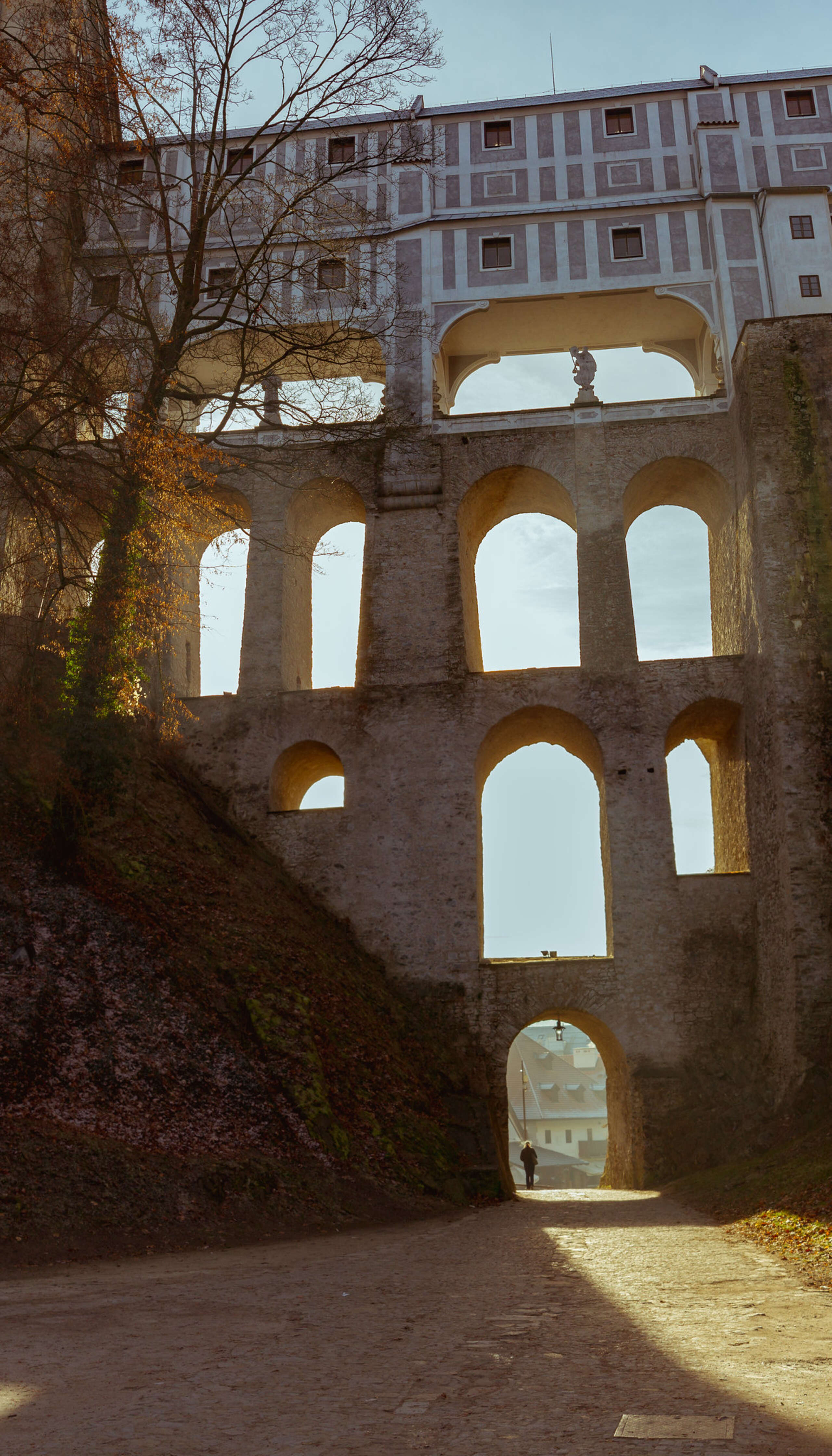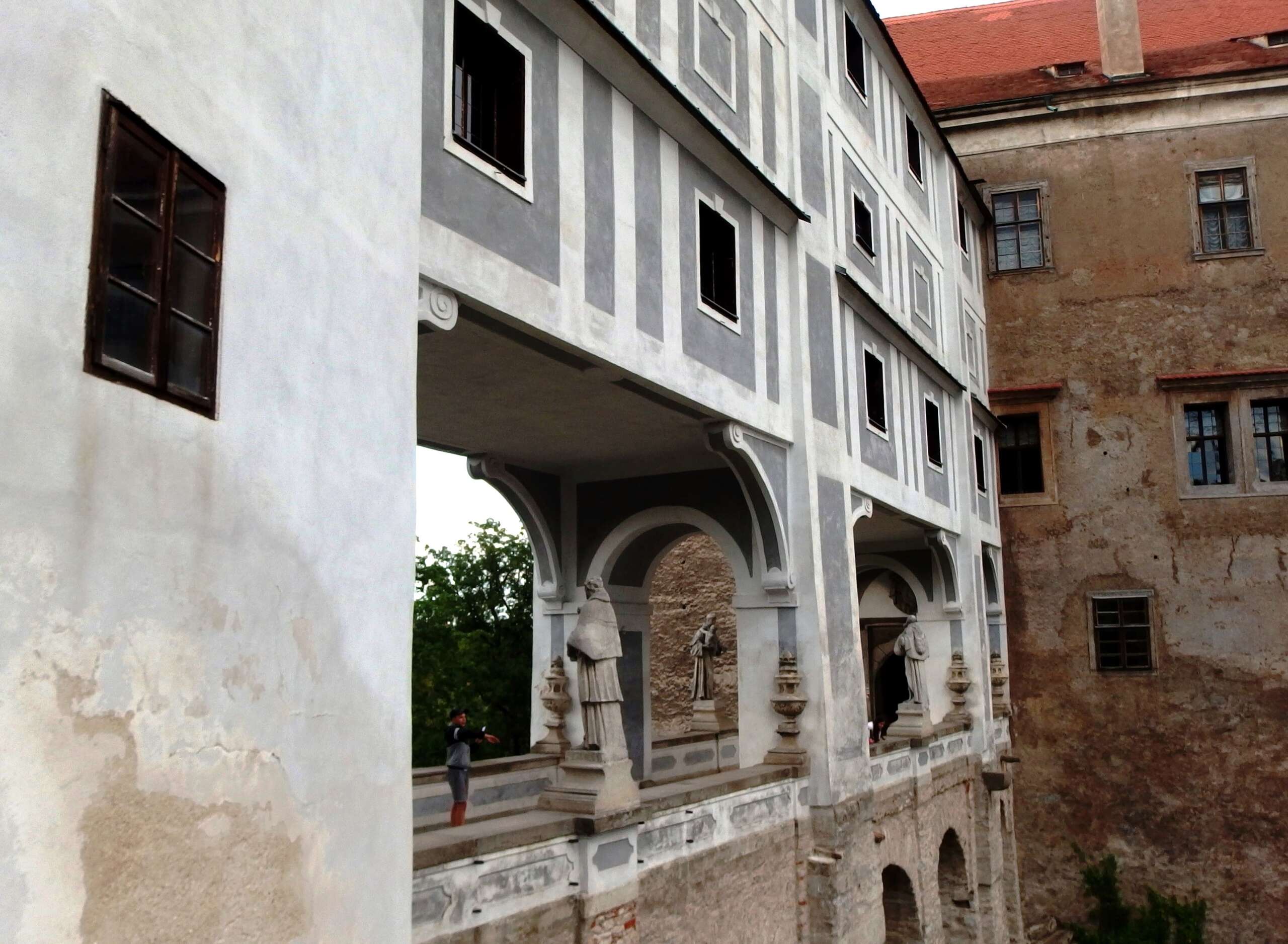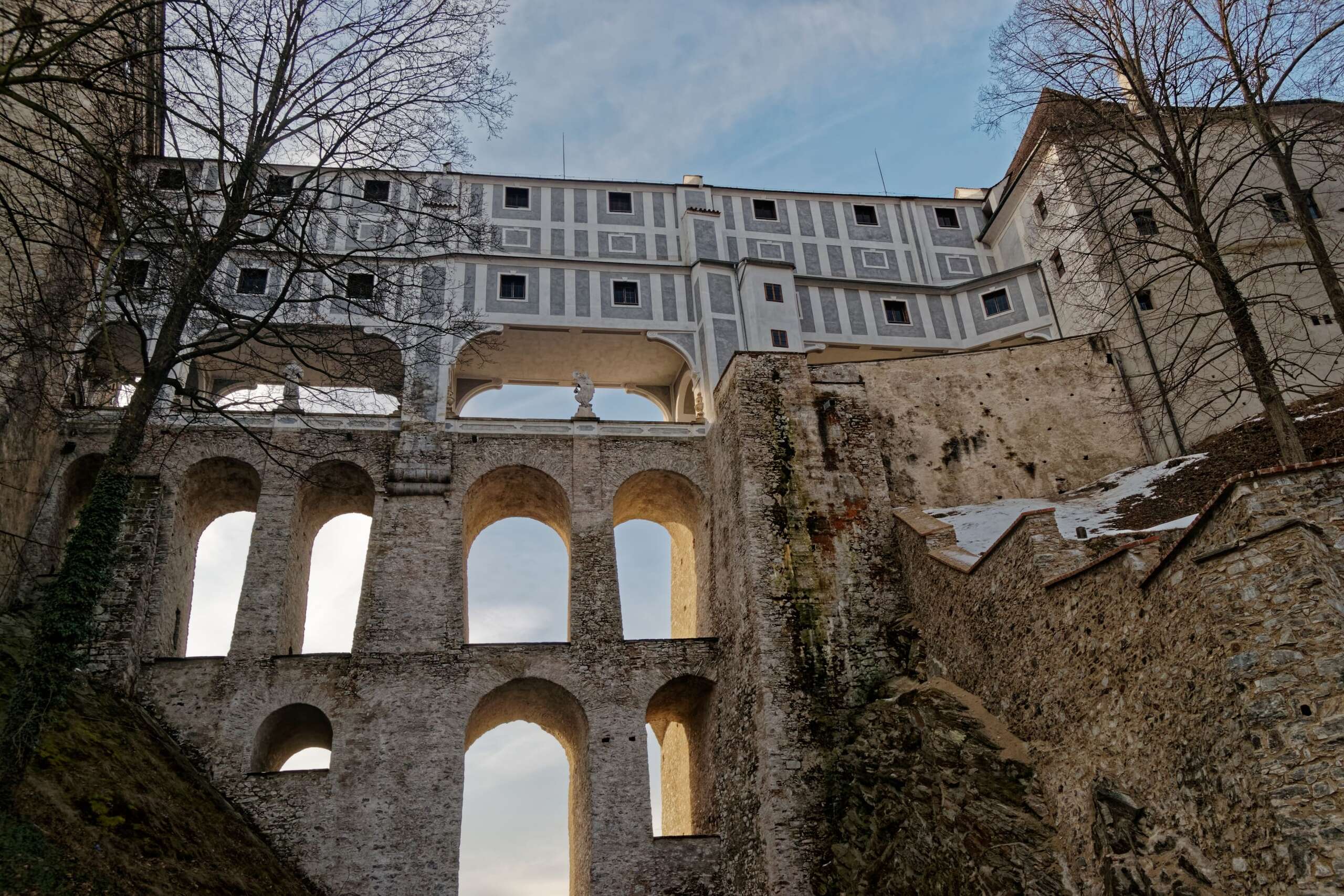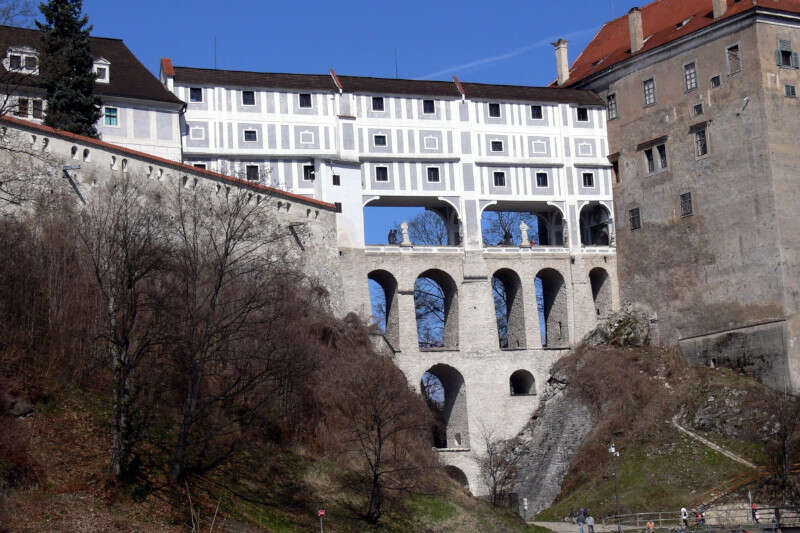Cloak bridge in Český Krumlov
The first references to the Cloak Bridge date back to the 15th century.
At that time it was probably only a wooden drawbridge. It is popular not only with tourists, but unfortunately also with suicides.
The cloak bridge called Mantelbrücke in the time, is a part of Český Krumlov Castle and the look is so spectacular that it is considered a separate attraction of the town.
The bridge rises above a deep ravine. It has five steps and connects the four main courtyards of the castle and a fifth courtyard located on a nearby rock.
Bridge on the mantle
The Cloak bridge was built in 1767 on the site of a wooden structure. Its lower part is very similar to a Roman aqueduct. It was built according to the rules of medieval fortification. In Czech, the bridge is called the "bridge on the mantle". According to one version, in the Middle Ages the word "plash" was used to refer to fortification structures. The length of a shell bridge is 30 metres and its height is 40 metres.
Tour of the bridge
There is an open crossing at the top of the bridge and two closed galleries above it. The lower closed gallery connected the Baroque Theatre and the Masquerade Hall. The upper gallery was reserved for noble persons and the owners of the castle. From the picture gallery of the castle it was possible to walk into the park.
The lower part of the bridge is open for passage. It offers the most beautiful view of the historical centre of Český Krumlov. Here you can enjoy the most picturesque view of the popular medieval town. On the Cloak Bridge, statues of Christian saints are installed: John of Nepomuk, Felix of Kantalice, Wenceslas and Anthony of Padua.












